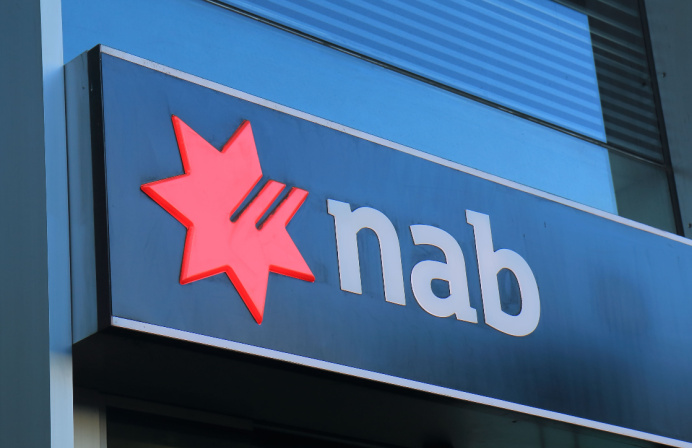
Experience is everything, as they say. Bigtech firms, like Amazon, Google and Netflix, have redefined what a good customer experience could and should be. In doing so, they have set the standard that consumers now expect, by default, from all digital service providers. For FSIs, once in dogged pursuit of the perfect product, the race to digital has elevated customer experience to become today’s critical service differentiator.
We take a look back at a fascinating panel discussion from our 2021 Banking Summit, exploring the benefits – and some lesser recognised problems – of personalisation for banks, customer experience research methodologies that have truly made an impact, and utilising front-line staff to inform and create meaningful customer touchpoints.
Featured panellists:
- Opher Yom-Tov, Chief Design Officer, ANZ
- Jeanne Hii, Head of Product, Heritage Bank
- Simon Burt, Head of Digital Customer Experience and Innovation, Newcastle Permanent Building Society
Moderator: Dr Luke Deer, Researcher & Tutor, Finance Discipline, University of Sydney Business School
Luke Deer (Moderator): What trends are you noticing in terms of consumer behaviour in financial services, particularly in consumer engagement and the rapid personalisation of services?
Burt: I’ve been thinking a lot about this lately. Of course, we have a large branch network, still. Lots of customers really see the branch as a key part of our service and they’ve – for 118 years – received quite a personalised experience; they walk into a branch knowing that same person that’s serving them. They’ll probably have a conversation about their kids, their parents, whatever it might be. That’s created a warm environment that people enjoy and continue to look for.
Of course, the branch is not for everyone. We’ve really been thinking about, how do we create a similar personalised experience, one that feels the same as wrapping your arms around the customer, so to speak, in the online world? We didn’t call it personalisation, we didn’t use data. We just had people building and forming relationships and leveraging those with customers. But that, to me, is a real challenge for all of us, making customers feel like we know them, creating a warm, trusted experience.
Hii: I absolutely agree. And it’s about delivering that single brand experience that brings that warmth and understanding of their personal lives and builds that trust. It’s about replicating that across all your channels, so it’s a single brand experience. When I think about this brand, this is the experience I get, regardless of whether I’ve been to the branch or have called through to the contact centre, or interacted with you online through the app.
The other thing that I’ve noticed – and Covid’s absolutely accelerated this – is that expectation for that much higher level and much more consistent experience. So, if it takes me two clicks to get into Netflix, why does it take me five different steps to get onto my app for banking? There’s a lot of comparison between businesses, because all industries have really stepped up the game. The consumer experience across different touchpoints they experience in their lives has also stepped up. So, even beyond Netflix, they’re seeing it’s so much easier to get a telco SIM card now and to sign up; there’s just a better KYC.
Standards are much, much higher, and expectations are much, much higher, including for personalisation, thanks to companies like Amazon and Google.
Yom-Tov: Customers are now expecting 24/7 availability across all their services. From my perspective, the design bar – which you’ve described, Jeanne [Hii], as ‘simplicity’ or ‘ease of use’ – is now incredibly high, because customers are comparing all of our services against all others’. And, obviously, there are some world-class services in the design and the experience space.
Customers are also expecting us to make it easier for them to connect all of our services together. Gone are the days of us providing services in silos.
If I think about financial services, a classic example in small business would be, they want their accounting software to connect to their invoicing, to connect to their payment’s services, to connect to their stock services and, in some cases, to even connect to the HR platforms. Gone are the days of them trying to weave all these things together; they’re expecting us to help them connect them.
Burt: And customers expect us to know them. And the more that we use things like apps, and, more to point, best-in-breed apps, that becomes the expectation of us also. Even more so in the banking sense: ‘I carry you around in my pocket, you should know me! I shouldn’t have to click 13 times to get in.’
Hii: Yes, that’s right! So, ‘Help pay my bills on time, tell me how to budget, tell me how much more money I have to buy this nice dress or not’. It’s about helping the customer plan their life. There’s certainly this greater expectation now to be more relevant to individuals’ lifestyles and to provide a lot more advice than just a commoditised banking service.
Luke Deer (Moderator): And that’s been one of the big gaps, hasn’t it, between a seamless Netflix or Amazon experience and then what you might find in a banking service? How do you get personalisation at scale in digital banking platforms?
Hii: Very prudently. One of the biggest things that people don’t appreciate – and let’s not talk about neobanks because everything is new, everything’s shiny, and there’s no legacy, and I think it’s always a lot easier to push some of these experiences forward because you’ve got shiny new toys and a new book – is that we’ve got legacy.
This legacy issue is really underappreciated and underestimated. We’re not just talking about legacy systems, but also about legacy products and experiences and the question of how we migrate those as well.
For any experience that you think is suboptimal today, there’s going to be a bunch of people who love them. And I’m specifically talking about services like a passbook. How did migrate people off those old, old products when there are still people who love them?
The other side is also about balancing compliance regulation and all those other requirements, being a responsible bank and doing the right thing for our different stakeholders while also accelerating the experience the same way that Google, Netflix and Amazon are. It’s quite an intricate balance.
I’ve constantly challenged my team to get that two-click acquisition, just like how a lot of our mobile network telcos actually do it today.
But, realistically, when we test it, we go: ‘Well, we need certain documentation to prove KYC, and to make sure that we meet AML and CTF obligations. So how close can we get to two clicks?’ And the other challenge is, when you get all this personalised information, data on customer spending trends and transaction analysis for instance, how much can you use it to really personalise? It is a bit of a balance, because we are dealing with a very complex environment.
Burt: There’s a real risk of overcomplicating what we’re trying to do with the customer. Having seen some research recently about mobile apps, in particular, I just want them to work. I want it to be easy, not have all this fantastic functionality. And the ‘two-click’ factor resonates with me. It’s something we’ve been working on for account opening for any type of account product. In the app, the customer can use biometrics to log on, so there are no clicks, technically, apart from the one to select the app. And then, genuinely, two clicks to have an account.
If someone walks into our branch now to open an account, we simply show them how to do it on the app!
It really amazes customers how personal it feels, because they feel ‘You know me‘ – all they have to do is click on the colour of the card they want and the product type; it feels quite personal. That’s not, in fact, why we designed it; we designed it with two clicks in mind, but it’s come out being quite a personalised experience because the customer thinks that we know them, and we’re leveraging that.
Yom-Tov: I really appreciate what you said about not overcomplicating things, Simon [Burt]. To even get to a point where we can properly personalise, we’ve got to clean the data, we’ve got to get consents and preferences, we’ve got to have modern systems that are able to perform real-time analytics. And, on the point of not overcomplicating, we sometimes lose sight of that, because we now have all these great tools at our disposal, we often want to put these through their paces and see how many different ways we can notify customers. Sometimes we’re just doing too much; less is certainly more.
Where we begin at ANZ is by really trying to understand the needs that customers have. We have our teams go and spend time with customers to understand where they need something personal and where are they super happy to have a really efficient, generic experience. That helps guide us to make sure that we’re doing just enough, whether it’s a notification about a bill that needs to be paid or highlighting when they’ve overspent, for example. But being very, very careful about not overwhelming and over-personalising.
Not overcomplicating things is probably one of the biggest and most important principles of personalisation.
Burt: It can be as simple as, when you’re filling out a form, and you say ‘I’m an existing customer’ on the website and then it still asks for your name and address! It drives you mad. Most would think, ‘You know who I am. Don’t ask me that!
We’re all shopping online; the ones you often become comfortable with are those where the process was easy. The ones who seem to know who I am: I don’t have to put in my billing address and my delivery address, they just know. That’s what we need to strive for, and that’s what customers are saying they want.
There’s lots of talk about Open Banking and what that might be able to deliver, but we could very quickly bury customers in information, data and needs, and it’s not what they’re asking for.
Luke Deer (Moderator): How do you identify what are those areas of need in the customer experience are to improve?
Hii: It’s your customer. Talk to them! How else do you do it? There’s no better way. We can sit there guessing what it is, but the best thing is just to talk to them, listen to them. We’ve got all these customer engagement surveys that have been in the market for many, many years. Look at their pain points. And that’s exactly what we do. We look at what we think the biggest complaints are, the biggest pain points, where, in the way the bank operates, it can create friction for the customer. And then we ask ‘Why?’; we get a lot richer information from just focus groups. And then we prioritise to make sure we address those pain points.
Some of the feedback is very simple, like, as Simon was saying, ‘Just give me the option to auto-populate. Don’t make me fill in a 30-page form!’ Also, what we’ve realised through this process of engaging with customers, a lot of times when they complain about something being complicated, they’re complaining about things not going fast enough. But when you ask them what the actual issue is, it’s often something really, really simple.
A customer might complain about it taking too long to get a loan approved. But when you speak to them about it, the concern is really about transparency.
It’s about that Uber experience: ‘I don’t mind if you come in 10 minutes; I don’t need you to be here now, but I want to know where you are. I want to be able to track progress – that’s what I care about’. The best thing is to first get data and get transaction behaviours right, and then talk to the customer because now you’ve got some great information to shape that conversation.
Yom-Tov: I totally agree. Again, in not overcomplicating it, it does start with talking to customers. We’ve been building a lot of research capability across ANZ, and I use the term ‘research’ very broadly. We’ve built more capability around traditional consumer quantitative research to try to understand macro trends. We’ve built more qualitative or sometimes what we call ‘design research’, ethnographic research where we’ll have teams hang out with customers in their homes or in their offices or go shopping with them, to try to listen to them but also to observe. Customers don’t wake up in the morning and don’t obsess about financial services.
If we ask them what they’d like from their bank account, their insurance product or their retirement products, customers don’t necessarily have the answer, because we’re the experts. Sometimes we have to observe the pain that they have that they can’t even articulate themselves and then infer what might be an interesting opportunity.
The third type of research is very much in the data analysis space, to try to read the data, to observe the behaviours of customers and to understand where there are friction points. So, essentially, by building a range of different qualitative and quantitative research, interacting with customers and interacting with data, we can start to get a pretty good picture of what the current, obvious needs are.
In most cases, customers can tell us what they don’t like and we can go ahead and improve it, and that moves the experience a long way. But if we want to start to be differentiated, to start to give people surprising and delightful things, then customers won’t actually tell us – that’s where we have to be a little smarter and infer their needs. We find that the most effective way is to make something, so we do a lot of prototyping – scribble an app interface on an A4 piece of paper, roleplay a banking experience – and then go and show those things to customers to see their reaction. Sometimes we actually have to provoke customers by putting something in front of them to see whether we’re heading in the right direction or not.
If you’ve got millions of customers, one of the really challenging questions is, ‘Which customers are going to give me the best answers?’ And that’s a tough one to answer, especially if you’ve got limited resources and limited time.
One thing that’s worked incredibly well for us is going out to talk to what we call ‘extreme customers’ or ‘extreme users’.
Sometimes they’re people who are, very clearly, not our target market or people who have big challenges. For example, we focus very heavily on inclusive design or accessibility, and so we’ve taken a lot of time to find customers who have processing challenges, visual challenges, auditory challenges, and then observe how they interact with our financial services. Sometimes we learn a hell of a lot more about how to make things better, not just for them, but for everybody else. We love looking for extreme, sometimes ‘power users’ or people with very limited financial literacy – those ends of the extreme we find we learn so much more that actually makes the product better for everyone.
Luke Deer (Moderator): Looking at the role of staff in shaping the customer experience, how can we best utilise staff to help determine those deeper customer needs?
Yom-Tov: So, staff, and especially front-line staff, are so immersed in customer challenges. And, historically, they’ve been very under leveraged. There are few places where we’re trying to give our front-line staff much more input into the development of improved or future products and services. Whenever we kick-off an initiative, there is a period of discovery, and the team will go out and engage with a range of front-line staff members or bring them into workshops to get them to participate in the idea generation and our prototyping processes.
When we build our small cross-functional teams to work on solutions, we actually second members of our front-line onto those teams – whether it’s an individual from retail banking, small business banking or institutional banking arm – that brings such a rich perspective.
They also give us access to our customers and to their customer relationships, too. We’ve found that that’s been a wonderful way to engage our front line, and they love it because they finally feel empowered to do something with all of the insights they have about our customers.
Hii: Can I just also point out, it’s not possible to deliver great customer service regardless of what you design, if you don’t have great employee services and great employee experiences.
When I look at policies on how to improve our experience offering, you can’t just improve it for customers; you’ve got to improve it for your front-line staff as well. If they’re having a tough day servicing customers, I guarantee you your customers are going to get a terrible level of service and a terrible experience.
Make it easy for your front line, because whatever you do for them, translates absolutely – like gold – to the end customer experience. So, take care of your front line!
This is an abridged extract from the first interactive panel at the 2021 FST Banking Summit, Driving Meaningful & Personalised Customer Interactions in Banking. For our 2022 events schedule, please visit us at our upcoming events page.





